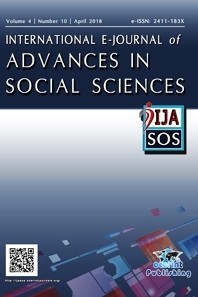
International E-Journal of Advances in Social Sciences
Yazarlar: Doruk Görkem ÖZKAN, Elif Merve ALPAK, Tuğba DÜZENLİ
Konular:-
DOI:10.18769/ijasos.96154
Anahtar Kelimeler:-
Özet: “Developing Creativity in Design Education: Landscape Architecture Environmental Design Studio Work” Landscape architecture is a discipline that creates livable places for the users by designing the environment in line with people’s needs and desires. In landscape discipline, the designs that are user-centered, different from each other and creative designs should be at the forefront when designing these spaces. Therefore, the landscape architecture education should aim at giving design and creative skills to the students. The theoretical and practical studio lessons during which master-apprentice relationship is at the forefront are very important in the landscape architecture education to give design and creative skills to the students. In this study, Environmental Design Project 1(edp1) courses that hold an important place in the education program of Karadeniz Technical University Architectural Design Department was considered. Within this course, the design training that is process-oriented and not result-oriented aiming at developing the design and creative skills of students was evaluated. In this process, firstly the students are given the project title “Coasts and Coastal Activities”. Students are asked to make primarily a literature survey about the coast (abstract-character union, tangible- real coastal examples) and then make a list of coastal activities implemented on the coast. After then, to develop creative skills, they are expected to put forward a function chart by choosing an original activity(main activity) and then identifying the other activities(after-activities) associated with the main activity. They are asked to create their original stylistic approaches in line with their activity lists, an example of emulation as a result of literature survey and the scenario. In this direction, sketches are drawn, and mock-up recommendations are created. One of the suggestions created is selected and spatial configuration, which consists of sizes appropriate to the capacity, reinforcement appropriate to the activity and format, is developed. As a result, with all these process, in addition to the theoretical knowledge, students are taught practically in stages how to organize a space. Within the context of the course, the final product will be that the students will be able to make plasticism in local design in accordance with the design concept and the user activities, and they will be able to identify the human needs and design activity fields and reinforcement based on this knowledge. Keywords: Design, Education, Creativity, Landscape Architecture
Dergi editörleri editör girişini kullanarak sisteme giriş yapabilirler. Editör girişi için tıklayınız.